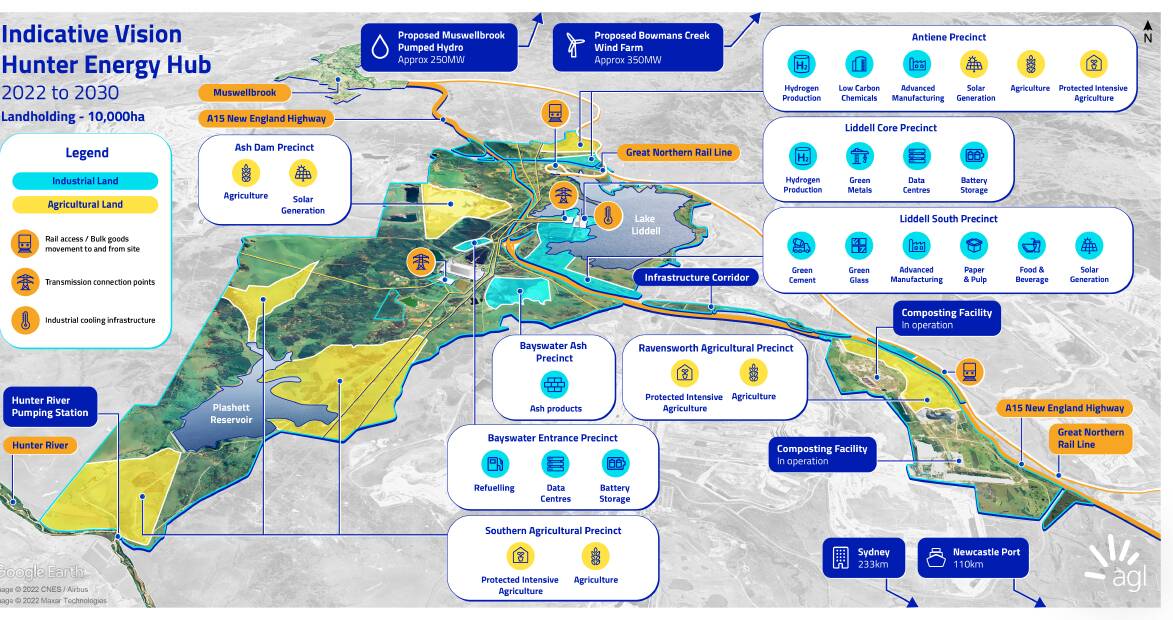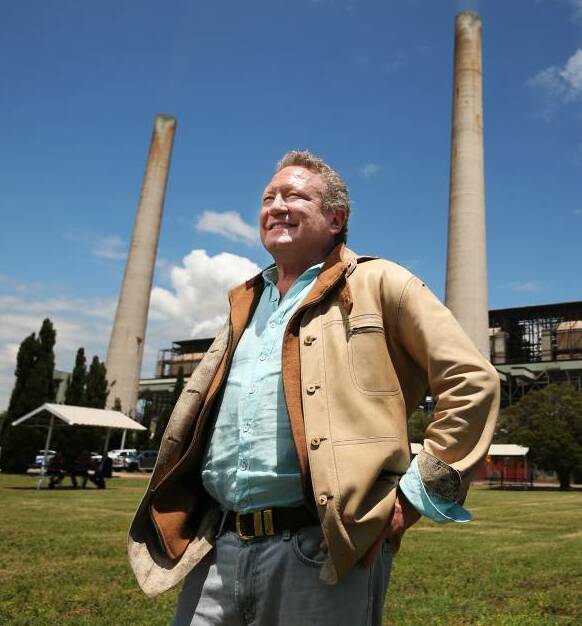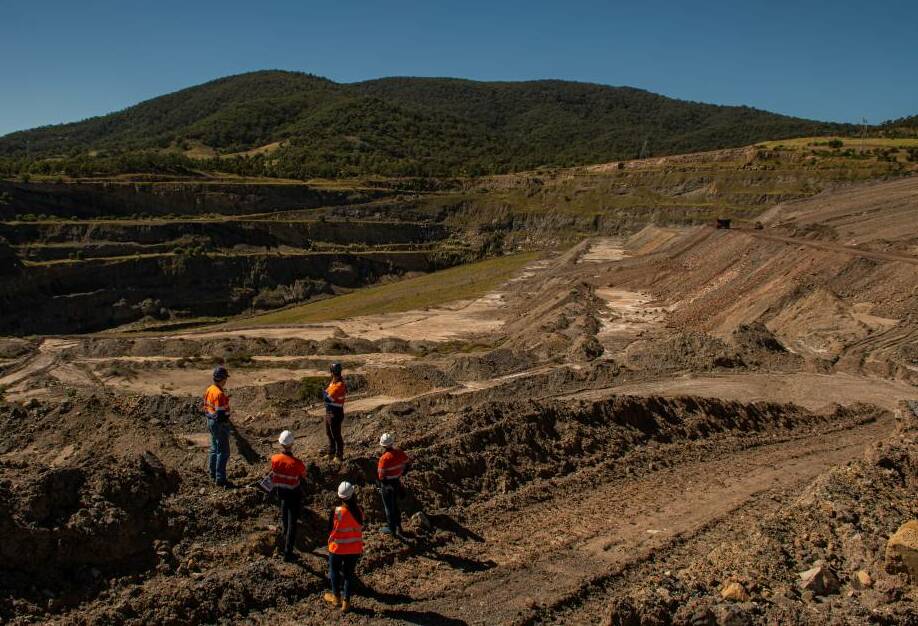
One of the world's largest integrated energy projects is taking shape on the site of Liddell and Bayswater power stations.
It is expected the 10,000-hectare Hunter Energy Hub could eventually employ more than 1000 people and serve as a major catalyst for future economic growth in the region.
AGL's indicative vision for the first phase of the project between 2022 and 2030 will occur while Bayswater Power Station is still operational.
The $1 billion-plus portfolio of industries includes agriculture, clean energy and firming technologies, composting, coal ash recycling, green metals and advanced manufacturing.
"This is not just about the transition of a single site, it is the transition of the entire region from a very coal intensive region into a renewable space," AGL chief operating officer Markus Brokhof said.

"It will require a huge effort, not just from AGL but from all of the players. Where you have examples of successful transition overseas it is always the result of a collective effort. It's not just the company that is closing the assets but also the community and the state and federal governments."
It is anticipated that many of those who will construct and work at the energy hub will transfer from Liddell or Bayswater power stations.
AGL is currently undertaking an analysis of what skills will most likely be required for the energy hub.
"I think we are in a prime position. We know we will need construction, electrical and mechanical engineers and we already have a lot of those people on our site. So it's not just about transitioning the assets but transitioning our people," Mr Brokhof said.
A major feature of the hub is likely to be a green hydrogen production facility, a joint venture between AGL and Fortescue Future Industries.

A 12-month feasibility study for the two-gigawatt project was announced last December.
Two of Japan's biggest energy companies, Inpex Corporation and Osaka Gas, joined an expanded feasibility study in August. Other project partners include Australian gas pipeline giant APA Group and distributor Jemena.
Mr Brokhof said the study was investigating issues such as what size of electrolyser was needed, potential domestic markets and creating infrastructure links.
"AGL has an interest in supplying some of the hydrogen, either as ammonia or something like that to the fertiliser industry. We also have an interest in keeping some of the hydrogen in the region as well," Mr Brokhof said.
"Fortescue is looking globally at its various export commitments."
The proposed 250-megawatt Muswellbrook Pumped Hydro project and the proposed 350-megawatt Bowmans Creek Wind Farm are other key components of the Hunter Energy Hub.
The pumped hydro project, a joint venture with Idemitsu Australia, recently received $9.45million to advance feasibility studies.
Mr Brokhof said it was hoped the partners would be in a position to make a final investment decision in 2025. If the project proceeds it could be operating by 2029-30.

"On balance, this is a unique opportunity," he said.
"It's also a very effective project because, at the end of the day it's a brownfield site so the environmental impacts are not huge."
Along with the pumped hydro project, a 500-megawatt grid-scale battery planned for the Liddell site featured prominently in AGL's recently revised strategic target, which will see the company completely exit coal-fired energy production by 2035.
The target will require 6.5 gigawatts of renewable generation capacity and 5.5 gigawatts of firming capacity to come online by 2030.
Mr Brokhof said he was confident the Hunter had the capacity to make a successful energy transition, similar to what had occurred in the Ruhr region in Germany where he grew up.
"I come from a region that was dominated by steel and coal. There are no coal-fired power stations or steel industry there any more. It has totally transitioned into a service industry.
"The forecast high unemployment rates never happened because of the effort that was put into transitioning the region and creating new workspaces. This is what needs to happen in regions like the Hunter"
A survey, conducted in February, found 67 per cent of 3500 Hunter locals expected large economic changes caused by shifts in mining and energy in the next 15 years. The figure was 69 per cent in the Upper Hunter.
Sixty four per cent of respondents said responding to economic change should be treated as an urgent priority.
Seventy three per cent said they supported the establishment of a Hunter Valley Authority to 'coordinate responses to economic change, attract jobs and investment, and assist workers'.
WHAT DO YOU THINK? We've made it a whole lot easier for you to have your say. Our new comment platform requires only one log-in to access articles and to join the discussion on the Newcastle Herald website. Find out how to register so you can enjoy civil, friendly and engaging discussions. Sign up for a subscription here.







